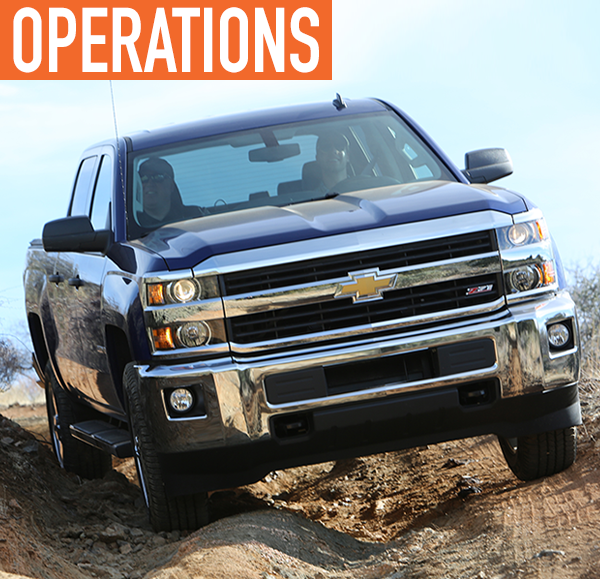Utilimarc released a survey of 40 clients regarding the cost and usage of ½-ton pickups. The sample for the survey included more than 5,500 Ford F-150s and Chevrolet 1500s. The data used represents the pattern Utilimarc has seen from the industry average of the selected sample.

One of the first factors considered in the survey was the cost of purchasing and using pickups in a fleet. From 2006 to 2013, purchase price for 4×2 pickups increased from $18,399 to $25,275—a 37 percent increase. For 4×4 pickups, the increase was slightly smaller at 33 percent, with the purchase price going from $24,487 in 2006 to $33,719 in 2013 (see Figure 1).
Why did these costs increase? New technology in pickups combined with inflation are likely the causes. Utility companies looking to save on the purchase price may consider purchasing used vehicles for a discounted price.
SURVEY COVERAGE
The survey covered operating costs, excluding the cost of fuel. Utilimarc looked at the operating costs based on the age of the vehicle. In the first year, both types of pickups cost $0.10 per mile to operate. Over 10 years of use, the cost rose to $0.25 for the 4×2 and $0.24 for the 4×4 pickups (see Figure 2).

This brings to light an interesting discussion point in determining which vehicles to buy and which vehicles to replace. While older pickups will cost less to purchase, they will cost more to run and maintain. Fleets must determine the mileage they intend to put on the pickups in order to strike a balance between maintenance costs and purchase cost.
While the maintenance costs have increased, the average number of days between on-demand repairs has decreased. Between 2009 and 2013, both types of pickups saw an improvement in the number of days between unscheduled repairs for their vehicles. This may point to better-made pickups or better maintenance routines.

AVERAGE AGE & LIFE
The survey also looked at the average mileage per year and the average age of the vehicles in the fleets surveyed (see Figures 3 and 5). This information can help those making purchase decisions to know which vehicles would be the best value.
According to the survey, 4×2 pickups in 2006 were driven an average of 13,181 miles per year, compared to 11,693 in 2013. For 4×4 pickups, the decrease was less, with a 16,312 average in 2006 compared to a 15,203 average in 2013. Historically, no matter what year, the 4×4 pickups saw more mileage (see Figure 3).

So, just how old are the pickups in the average fleet? This number is on the increase for both types of pickups. In 2013, the average age of 4×2 pickups was 6.5 years, with a 5.75 average for 4×4 pickups. This is an increase of 1.35 years for 4×2 pickups and 0.75 for 4×4 pickups, since 2009 (see Figure 5). This data shows that today’s fleets are keeping their pickups in service longer in spite of the more expensive maintenance costs associated with older pickups.
The average operating cost per mile for a 4×2 pickup over a 10-year period was $0.16; the average cost for 4×4 pickups was the same.
Figure 3 shows the average miles driven from 2009 to 2013 for the 4×2 and 4×4. The annual average miles driven has steadily decreased for both drive types.
According to the data set in Figure 3, the 4×4 pickup has historically driven more miles annually than the 4×2. In 2013 alone, the 4×4 was driven an average of 3,510 more miles than the 4×2.

UNSCHEDULED/DEMAND REPAIRS
The 2013 data shows a closing gap between an unscheduled/demand repair event between the 4×2 and 4×4 pickups (see Figure 4). The data alone shows improvement between the average number of days for an unscheduled/demand repair event for both types since 2009. The 4×2 increased from 68.5 to 80.7 days; the 4×4 increased from 73.1 to 79.1 days.

According to Figure 6, the 4×4 pickup has seen a steady increase in use from 2009 to 2013.![]()
The graphs in this article are derived from the data of 40 Utilimarc utility clients and their active ½-ton pickups. The sample included over 5,500 Ford F-150s and Chevrolet 1500s. The data being used is representing the patterns Utilimarc has seen from the industry average of the selected sample.
FOR MORE INFORMATION:
Find out more about the data provided here and how the Utilimarc fleet analytics platform could improve your fleet, visit www.fleetanswers.com and/or www.utilimarc.com.
_______________________________________________________________________
MODERN WORKTRUCK SOLUTIONS: JANUARY 2016 ISSUE
Did you enjoy this article?
Subscribe to the FREE Digital Edition of Modern WorkTruck Solutions magazine.
![]()




